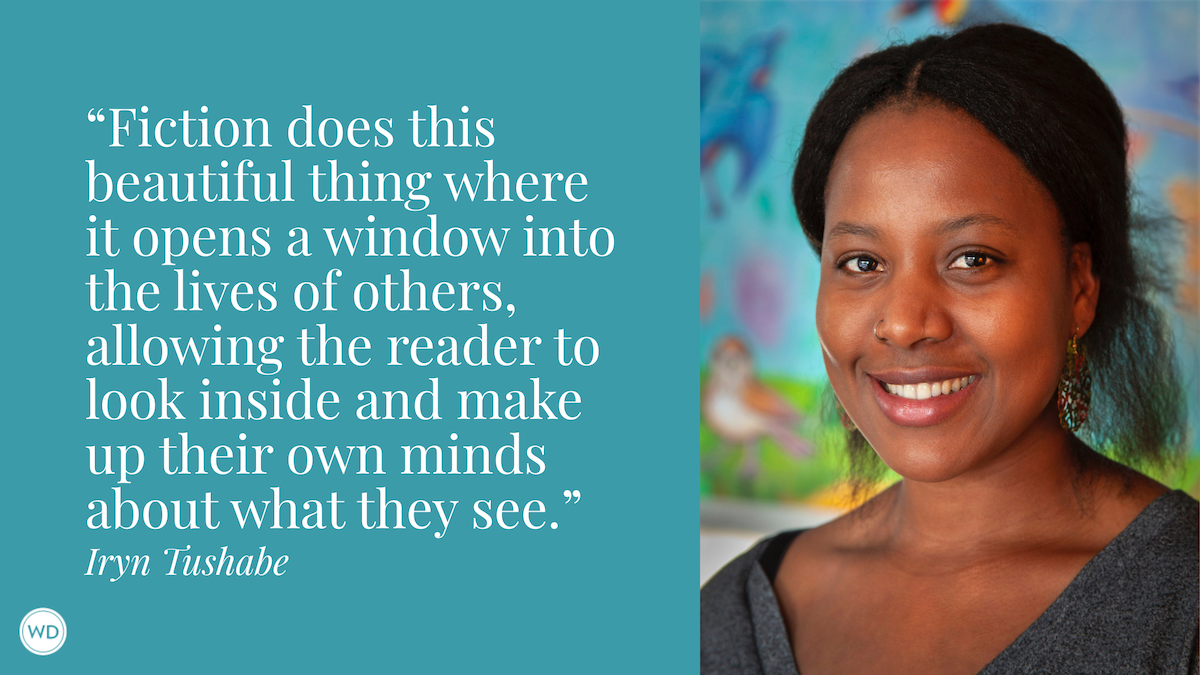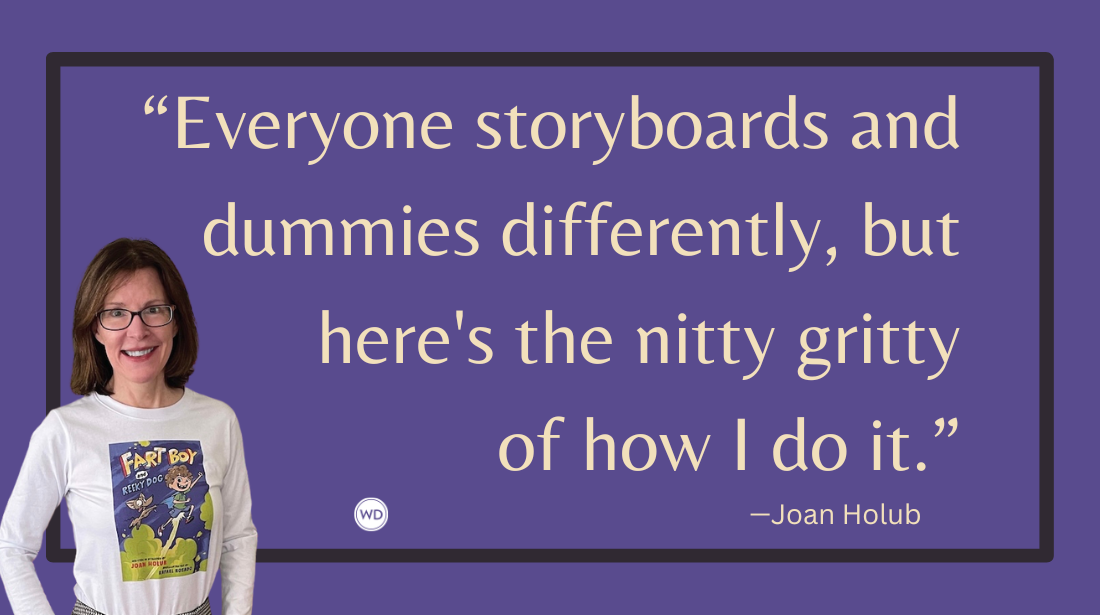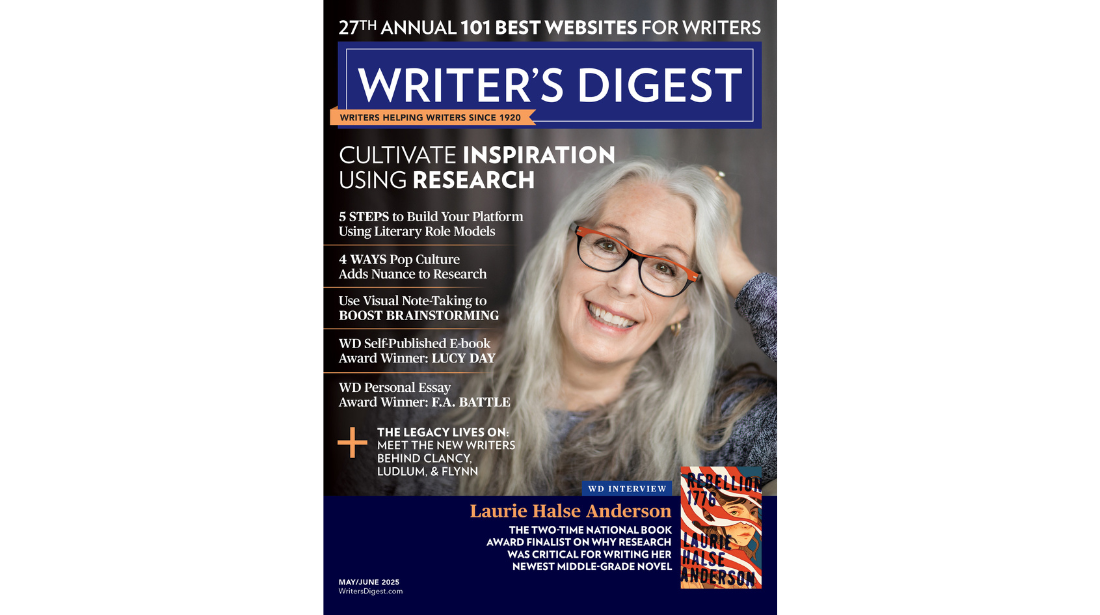Writing Different Time Periods in Fiction
Author Maggie Anton shares why, after writing a novel set in the 20th century, she decided to write a novel set in Biblical times.
Writer's Digest wants to know why, after writing a novel set in the 20th century (The Choice), I decided to write one set in Biblical times (The Midwives’ Escape: from Egypt to Jericho). A short answer is that the book I wanted to read hadn’t been written yet, so I wrote one, which is the reason I wrote each of my novels.
A longer answer is that The Choice: A Novel of Love, Faith, and the Talmud, which takes place in 1920-1950s in New York and is inspired by three of Chaim Potok's early novels. These Potok novels appeared to foreshadow a sequel, which was never written. So I wrote it.
As for The Midwives’ Escape, every Spring, as my family prepares for our Passover Seder, we watch the animated movie based on the Biblical Exodus, Prince of Egypt. Similar to the 1956 live-action film, The Ten Commandments, viewers see baby Moses sent down the Nile by his enslaved mother, then raised by Pharaoh’s daughter, only to run away and encounter God in a burning bush, after which Moses returns to afflict Egypt with 10 plagues to force Pharaoh to free the Hebrew slaves. When Pharaoh changes his mind and sends his army after them, God splits the sea so the Hebrews can escape while the Egyptians drown. Next thing we know, Moses is bringing down the Tablets carved with the Ten Commandments from Mt. Sinai. And that is where both movies end.
But I noticed one key difference in the animated movie: As the Hebrews are fleeing, some Egyptian soldiers drop their weapons and join them. According to the Torah, these soldiers are among the “mixed multitude” of non-Hebrews who also leave Egypt and accept circumcision (becoming converts) before the Battle of Jericho. I became fascinated with this mixed multitude: Who were they and where did they come from? Why did they abandon Egypt and Egyptian gods to join the Hebrews and worship their God? What was it like for them? In particular, what was it like for the women, both Hebrew and not?
So the plot for a new historical novel arose. I wanted readers, and myself, to know more than the Bible tells us about what happened later, after Moses brought down the Tablets at Mt. Sinai. I wanted us to know what happened during the missing (from the Bible) Forty Years Wandering in the Desert before the Hebrews and Mixed Multitude entered the Promised Land. I wanted us to know who the Cushite woman was that Moses married, much to Miriam and Aaron’s disapproval. And what happened to Moses’ sons?
Readers, and writers, might think that it’s easier to write a historical novel set in the 20th century CE than in the 12th century BCE. Most of us experienced the 20th century CE personally, and what we didn’t experience is available on the internet. But searching the internet is like trying to find a needle in a haystack, or worse, trying to search the New York Times online collection of every issue published since the late 1800s.
To my surprise, and delight, there was much more information available about Biblical times than I expected, both in print and online. For the former, I searched the many religious research libraries, including those at Hebrew Union College (HUC), American Jewish University (AJU), and Loyola-Marymount University (LMU). For the later, I joined the Biblical Archaeology Society (BAS), which has a quarterly magazine and a website, both providing excellent information. BAS also gives members access to 50 years of articles on their website. The more I learned, the more eager I was to write my novel.
Early on, I learned that ancient Egypt had trade relations with many countries prior to 1700 BCE, especially with the Hittites from Anatolia (modern-day Turkey). In between fighting their own country’s wars, these men were formidable mercenaries, some serving in Egypt. I was familiar with Hittites from the Bible story of David and Bathsheba, wife of Uriah the Hittite. I knew my novel would feature foreign soldiers to train the fleeing Israelite slaves, so Hittites were a logical choice. Since I was focusing on women, I included Nubians, also known as Cushites, famous for their female equestrian-archers. This allowed me to introduce a specific Cushite who would marry Moses, much to Miriam and Aaron’s disapproval.
I learned about the Bronze Age Collapse at the end of 12th-Century BCE, which caused many Mediterranean and Middle East locales, such as Troy, Lebanon, Canaan, Syria, Cyprus, Lagash, Anatolia, Crete, and more to suffer drought and famine. Biblical scholars posit that this was when Jacob’s family left Canaan for Egypt, along with other starving peoples who later became part of the mixed multitude.
There were also fun things to learn! My favorite was that, unlike most ancient cultures where men married more than one wife, Lagash custom was that a woman could marry more than one husband—as long as they were brothers. Of course I put that situation in my new novel.
On the subject of women, I’d already learned a great deal about medieval midwifery while writing Rashi’s Daughters, so I decided to put that knowledge to use by making my Egyptian mother-daughter heroines midwives. Then I couldn’t resist naming them after the famous Egyptian midwives from Exodus 1:15. But I still had to research ancient midwifery to ensure that my midwives stayed in character. To my surprise, I learned that ancient Egyptian midwives utilized bronze forceps to pull out a baby wedged in the mother’s birth canal. So I made sure to write a scene that included the technique.
Check out Maggie Anton's The Midwives' Escape: From Egypt to Jericho here:
(WD uses affiliate links.)
Maggie Anton was born Margaret Antonofsky in Los Angeles, California, where she still resides. Raised in a secular, socialist household, she reached adulthood with little knowledge of her Jewish religion. All that changed when David Parkhurst, who was to become her husband, entered her life, and they both discovered Judaism as adults. That was the start of a lifetime of Jewish education, synagogue involvement, and ritual observance. This was in addition to raising their children, Emily and Ari, and working full-time as a clinical chemist for Kaiser Permanente for over 30 years. In 1992 Anton joined a women's Talmud class taught by Rachel Adler, now a professor at Hebrew Union College in Los Angeles. To her surprise, she fell in love with Talmud, a passion that has continued unabated for 30 years. Intrigued that the great Talmudic scholar Rashi had no sons, only daughters, Anton researched the family and decided to write novels about them. Thus, the award-winning trilogy, Rashi's Daughters, was born, to be followed by National Jewish Book Award finalist, Rav Hisda's Daughter: Apprentice and its sequel, Enchantress. Still studying women and Talmud, Anton has lectured throughout North America and Israel about the history behind her novels. Her most recent effort is the Ben Franklin Award winner for Religion, Fifty Shades of Talmud: What the First Rabbis Had to Say about You-Know-What, a light-hearted look at our Sages's surprisingly progressive views on sexuality. For more information visit https://www.maggieanton.com/.








